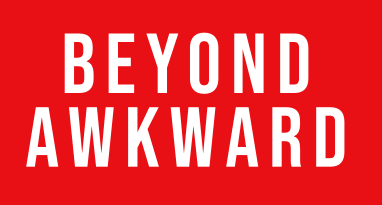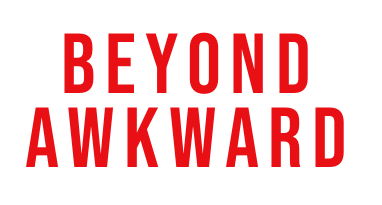
25 Jun How To Reach Experience Based People With The Gospel
A few years back while sitting in a café with a student trying my best to persuade them of the reality of Jesus and that He is in fact God, I became incredible frustrated as he said to me, “Beau, I don’t care if this is true or not, I want to know if Jesus works?”
This comment both perplexed and opened up a whole new way for me to see how to reach people that are more experienced based.
You see, more cognitive based people are asking, “What is true” while more experienced based people are asking, “What is real”. This completely changes the way we need to approach people when sharing the gospel and it can be the total difference from being tuned out after one minute or powerfully in prayer with them as they are experiencing Jesus.
In my book, Beyond Awkward, I have a whole chapter devoted to helping us think about how to reach an experienced based culture.
The Gospel doesn’t need to change, but our methods do.
Where we may be tempted to say that evangelism just doesn’t work anymore or that it is just too awkward, I think what may be happening for many of us is that we are using modern tools of evangelism and trying to force them onto an emerging culture.
The gospel doesn’t need to change, but our methods do. #BeyondAwkwardBook
We need a different model and here is one I have found to work for me and I detail it here in an excerpt from my book,
We Need A Different Model
When trying to figure out how to reach our experience-based culture, I providentially came across the Celtic model of evangelism. The Celtic model emphasizes process and journey, which fits well with today’s culture. St. Patrick developed this model as he reached out to the Celtic people, and it stands in contrast to the “persuasion” or “Roman” model that dominated evangelism during his time. If we want to reach today’s culture, it will help to move toward the Celtic model and away from the persuasion model (see fig. 4.1).
| Persuasion Model | Celtic Model |
| 1. Persuasion Evangelism
2. Proclamation 3. Conversion 4. Community |
1. Incarnation Evangelism
2. Soul Awakening 3. Community 4. Transformation |
Fig. 4.1 Persuasion Model Celtic Model
The Celtic model. The Celtic model emphasizes incarnation, living among the people and awakening them to Jesus through relationship, discussion and preaching. Once people awaken to the reality of God, they will join the community. In other words, they “belong before they believe.” Later, as they come to faith in Christ through study and classes, they will be challenged toward wholelife transformation.
Being with people and then helping them belong to community before believing or changing anything is the Celtic model. This is helpful for experience-based people because they need to see if it is real before they believe and change their behavior. They want to see if this gospel we talk about has power to actually transform broken lives. John Wesley, who furthered this model and developed it into Methodism, was very comfortable allowing people to belong before they believed, and as they came to see that Christ is true, they would change their minds and their lives.
The persuasion model. The persuasion model is very different. The emphasis is on persuading people to believe what is true about God. It focuses on first changing minds and then experiencing community. Institutions of the persuasion model often use an upfront preacher to issue a call to faith and challenge people to change their beliefs. Once the person converts to Christ, he or she is encouraged to join the community.
We see this model in our churches and most famously in the Billy Graham crusades. People are first convinced of the saving grace of Christ (believing) and then encouraged to attend church (belonging).
This is a terrific way to convert people that want explanations and are convinced by the truth.
To be clear, there is nothing wrong with this model. It has worked for centuries and still works today with some people. I still use it and prefer it in some situations. But if we are going to reach a generation of experience-oriented people, we need to use a different model, one in which our evangelistic efforts and church structures first help people belong to community and then experience Christ. We need to emphasize process and journey more than persuasion and truth.
Analogy of a house. To illustrate this further, let’s think about a house as an analogy for the experience-based person. If the front door of our evangelism efforts with modern people is to “convince them of what is true,” then it makes perfect sense that we would start with persuasion, whether through the bridge diagram or proofs of the resurrection. As the seeker rings the doorbell of faith, we would answer and start persuading with the truth. Our first encounter with friends or a neighbors would be to convince them that Jesus is God. We might use a tract or a set of propositional truths to do so.
But today the front-door greeting needs to change. As the experience-based person rings the doorbell of faith, we need to answer the door and greet them with a personal story. They need to hear how God is moving in our life and how this faith in Christ works. They are asking a different question: “Does Christianity (or Jesus) work?”[1]
If you would like to understand what I would call the front door, living room, and upstairs of an evangelistic conversation, then you need to buy the book and keep reading! In the book my goal is to help you understand and engage the awkward tensions that come up in sharing your faith and help you move past them so you can see breakthrough.
5 Free Evangelism Resources
If you subscribe to https://beyondawkward.com, you will get 5 FREE bonuses – The Beyond Awkward Starter Kit. A new Ebook, one of the video modules from the web course, 9 discipleship lessons from Beyond Awkward, a free chapter of Beyond Awkward and a case study about a man’s transformation from terrified of evangelism to now being tremendously bold in the sharing of his faith.
Subscribe and get the FREE STARTER KIT HERE:
[1] Crosetto, Beau. “How Do I Avoid Being Pushy?” Beyond Awkward: When Talking about Jesus Is outside Your Comfort Zone. Downers Grove, IL: InterVarsity, 2014. 149-50. Print.




No Comments